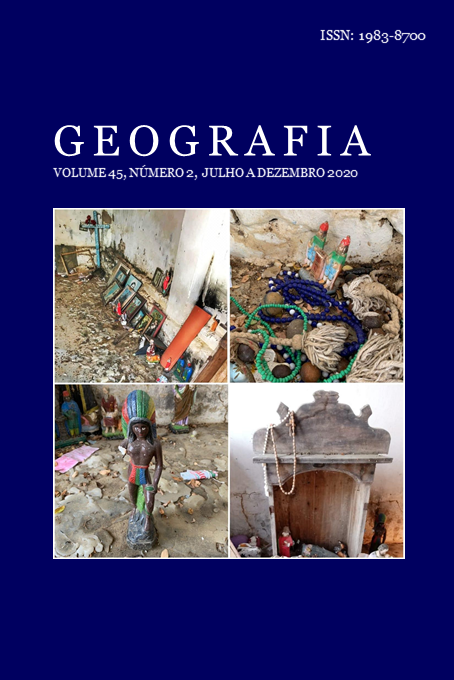DISTORTIONS CAUSED BY THE LACK OF RADIOMETRIC CALIBRATION AND ATMOSPHERIC EFFECTS ON THE ANALYSIS OF ORBITAL REMOTE SENSING DATA
DOI:
https://doi.org/10.5016/geografia.v45i2.15313Abstract
This paper investigates the distortions in information extracted from remote sensing data when radiometric calibration and atmospheric effects correction are not carried out. For the comparison, we used pixel values from raw data in Digital Numbers (DN, or grey tones), from the top of the atmosphere reflectance (TOA) uncorrected data, and from the surface reflectance data (SR), gathered from selected targets (such as burned crop, native vegetation, rivers and bare soil) in a multispectral image acquired by the Landsat 7 satellite, row 226, path 071, depicting the Cuiabá city in MT state, on 28/09/2002. Next, we compared Normalized Difference Vegetation Index calculated from the uncalibrated data and from the surface reflectances (atmosphere corrected) so that we could verify the errors when using raw data. The analysis show the importance of the atmospheric correction prior the analysis when dealing with orbital sensors, given that the spectral signatures of the targets were severely drifted from the ones expected according to the specialized literature.
Downloads
Published
Issue
Section
License
The authors maintain the copyright and grant GEOGRAFIA the right of first publication, with the articles simultaneously licensed under the Creative Commons BY 4.0 License, which allows sharing and adapting the articles for any purpose, as long as appropriate credits and provisions of image rights, privacy or moral rights. Other legal attributions can be accessed at: https://creativecommons.org/licenses/by/4.0/legalcode.en.
Geography, Rio Claro, SP, Brazil - eISSN 1983-8700 is licensed under the Creative Commons BY 4.0 License.





